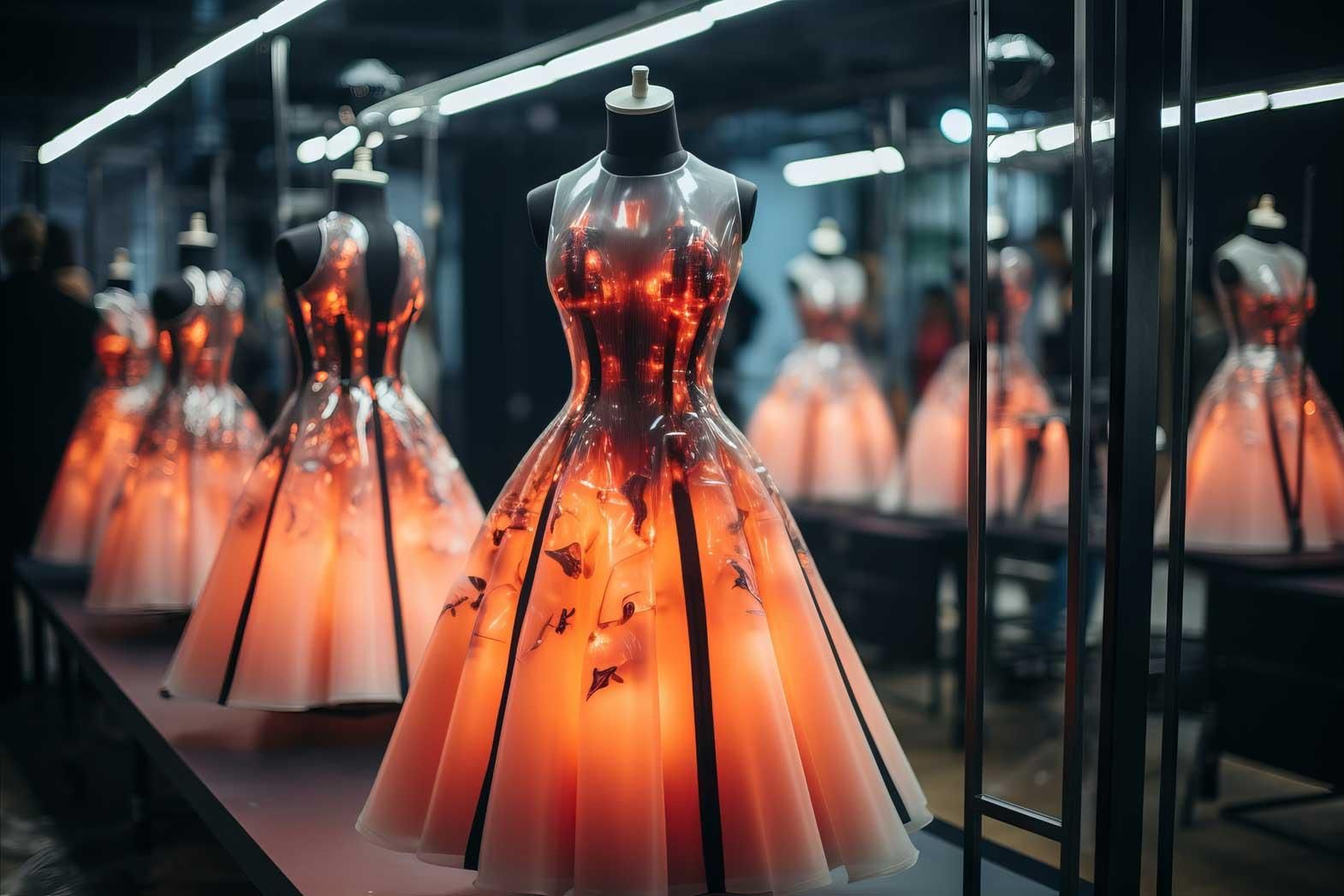Architects and scientists have been using 3D printing to create models for decades, but it's beginning to show even more potential. From 3D printed buildings to 3D printed hearing aids, this technology could be revolutionary for a variety of industries.
Fashion is no exception, and designers started to experiment with 3D printing around 2010. It is already being used to create new types of art and fashion. It enables designers to produce designs that are complicated, even impossible, to manufacture and this inevitably fuels creativity and innovation. It allows innovation in technique and material, and ideas can materialize within minutes, contrary to the traditional manufacturing process. If designers fail with 3D printing, they can easily try again.
Recent successful examples, which have got considerably media coverage, have been the work showcased by Francis Bitonti/Michael Schmidt and Iris van Herpen at Paris Fashion Week.
Architect Francis Bitonti and fashion designer Michael Schmidt collaborated to make a dress for burlesque diva Dita Von Teese. She wore the garment to the Ace Hotel in March for a convention hosted by the online 3D printing marketplace, Shapeways. The dress consisted of 2,500 intersecting joint pieces that were linked together by hand. The finishing touches included a black lacquer coating and 12,000 hand-placed Swarovski crystals reflecting Schmidt's iconic glam that attracts a clientele including Madonna, Rihanna, and Lady Gaga.
Similarly, Dutch designer Iris van Herpen unveiled 3D printing collaborations on the catwalks of Paris Fashion Week with a leading manufacturer of 3D printers for prototyping and manufacturing and a pioneer in additive manufacturing solutions.
Other examples include companies such as Hot Pop Factory who are printing jewellery. Retailers such as New Balance are printing shoes. Designers such as Ron Arab are printing sunglasses. San Francisco-based clothing company Continuum is among the first to create wearable, 3D printed pieces. Customers design bikinis on Continuum's website, specifying their body shapes and measurements. The company then uses nylon to print out each unique order.
British designer Catherine Wales is making moves, too. She is best known for her Project DNA collection, which includes avant-garde 3D printed masks, accessories and apparel, all printed with white nylon. The eccentric shapes of her garments reflect that 3D printed clothing is still in its early stages. Today, the materials and technologies used for 3D printing still dictate and affect garment design. But the technologies that fuel 3D printing continue to grow, and its limitations continue to diminish.
For instance, a leading company that prints custom-designed objects has just come out with printing material which is cushioning, elastic, and lightweight designed specifically for use in the fashion industry. There are many reasons for the success of this technology and the great interest it has aroused: new freedom in design, fast prototype manufacturing, potential for reduction of costs in stock-keeping and logistics are just a prelude.
3D printing will also provide better distribution. When it comes to shopping, instead of going to retail stores and jostling with others, a buyer can just buy the design online and have it printed on a 3D printer. There are now websites like Thingiverse and Shapeways that have already established themselves as marketplaces for 3D printed goods, including clothing and accessories.
However, 3D printing also gives many causes for controversial discussions with regard to subjects like copyright and protection of intellectual property rights. There will always be counterfeiters and copycats seeking to make money from the success of others. All they need are the design and a 3D printer and they can wreak havoc in the market.
As a safeguard, the garment industry will probably lobby for more comprehensive copyright protection than music and film industries have to protect their property from counterfeiters. As of today the fashion world is yet to see a clear test case involving 3D printing. Overall, 3D printing, if successful, will cause the fashion industry to undergo a profound transformation: shorter lead time, production in smaller quantities, easy customisation, obsolescence of many jobs and legal issues concerning copyright.
In India, 3D printing is used for research and prototyping in the application areas of automobile, defence, mechanical, toys, medicine and jewellery. However, there has been no focus on 3D printing specifically for fashion. For India to be a part of the leading countries involved in 3D printed fashion, there will a need for:
Design capabilities: India will need designers with the knowledge of 3D designing software to develop 3D designs for fashion. With India's strength in sheer numbers of computer engineers and architects, the country can be a hub of 3D printed fashion.
Intellectual property: There will be a need for strong intellectual property awareness to protect the designs created for 3D printing to avoid counterfeiting leading to cannabilisation of the industry. An organised approach to develop this industry is required.
Platform for business exchange: There is a need to create a B2B and B2C portal for designers to sell their 3D designs securely and also to act as a knowledge sharing platform for the industry to grow. With a clarion call from our government for a 'Make in India' initiative, 3D printing technology is going to be one of the key areas the industry in India needs to understand and invest in. Since this technology is still in its very early stages, great results are to be expected.








Comments